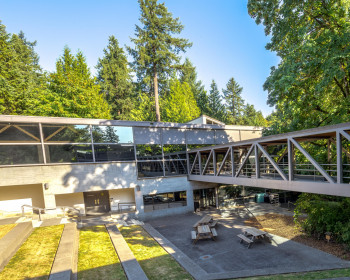Kelsey Gorman (2L) Publishes Article on Forest Resources for the American Bar Association
Kelsey’s article, titled “A Time Line of the Infrastructure Investment and Jobs Act and Wildfire Crisis Strategy”, was posted on April 3rd, 2023 to the American Bar Association website. The article discusses the Infrastructure Investment and Jobs Act, the Forest Service’s Wildfire Crisis Strategy and Implementation Plan, and more.
The full article can be found here.
“
On November 15, 2021, President Biden signed the Infrastructure Investment and Jobs Act (IIJA) into law. The IIJA allocates funds to address several issues, including rebuilding roads, bridges, airports, upgrading public transit, cleaning up pollution, providing affordable access to the internet, and creating resiliency against extreme weather events, including wildfires. As part of the IIJA, Congress allocated approximately $3 billion to restore ecosystems and reduce wildfire risk for fiscal years 2022–2026.
On January 18, 2022, the Forest Service announced the Wildfire Crisis Strategy (Strategy), a 10-year plan to treat up to 50 million acres of high-risk firesheds and develop a long-term maintenance plan beyond the 10 years. Of these 50 million acres, 20 million will be on national forestlands. The Strategy calls for a paradigm shift in confronting the wildfire crisis by strategically focusing on fuel and forest health treatments using the best available science as a guide. As part of the Strategy, the Forest Service will utilize increased forest management activities, including forest thinning and prescribed fire. The IIJA funding acts as a down payment for this 10-year plan. Thus, the Forest Service must comply with the IIJA when allocating funds.
A key provision of the IIJA is section 40803(g) (codified at 16 U.S.C. 6592) that provides the factors the Forest Service must consider in determining what projects to prioritize. The first two factors listed are projects that have completed the National Environmental Policy Act of 1969 “NEPA) process and projects that reduce the likelihood of experiencing uncharacteristically severe effects from a potential wildfire.
In January 2022, the Forest Service announced its Implementation Plan (Plan) for the Wildlife Crisis Strategy. In the Plan, the Forest Service outlines how it will prioritize landscapes. Essentially, initial investments are aimed toward high-risk firesheds where projects are ready to begin or expand but lack funding: projects should have already gone through public comment and required environmental analysis, especially for the projects to begin in the Plan’s first two years. The Plan thus seems to comply with the first factor, a completed NEPA process, listed in section 40803(g). The Plan also notes that the projects will be prioritized by those that are outcome driven and are at scale or can be built to scale, meaning that the projects are large enough to solve the problem, which aligns with the second factor, wildfire risk reduction, listed in section 40803(g). Importantly, developing needed workforce capacity is emphasized as a condition for success.
Section 40803(j) requires the secretary of agriculture and the secretary of the interior to establish a five-year monitoring, maintenance, and treatment plan within 120 days of the Act. The plan must include the activities, listed in section 40803(c), that the secretary of agriculture and secretary of interior will take to reduce the risk of wildfire. The secretaries must do this by conducting restoration treatments and improving the Fire Regime Condition Class of 10 million acres of high-risk land, not including scheduled annual treatments. The activities listed in section 40803(c) include monitoring the effects of treatments on wildfire outcomes and ecosystem restoration services and publishing a report every five years showing the extent that treatments and previous wildfires affect the boundaries of wildfires. The plan must also establish a process for prioritizing treatments in areas and communities at the highest risk of catastrophic wildfires.
While the Forest Service’s Implementation Plan establishes a process for prioritizing treatments, the Plan only vaguely addresses monitoring and maintenance by stating that the agency requires the capacity to monitor and evaluate the effectiveness of treatments….”
Read the full article here.
More Environmental, Natural Resources, & Energy Law Stories
Environmental, Natural Resources, and Energy Law is located in Wood Hall on the Law Campus.
MSC: 51
email elaw@lclark.edu
voice 503-768-6649
Environmental, Natural Resources, and Energy Law
Lewis & Clark Law School
10101 S. Terwilliger Boulevard MSC 51
Portland OR 97219

